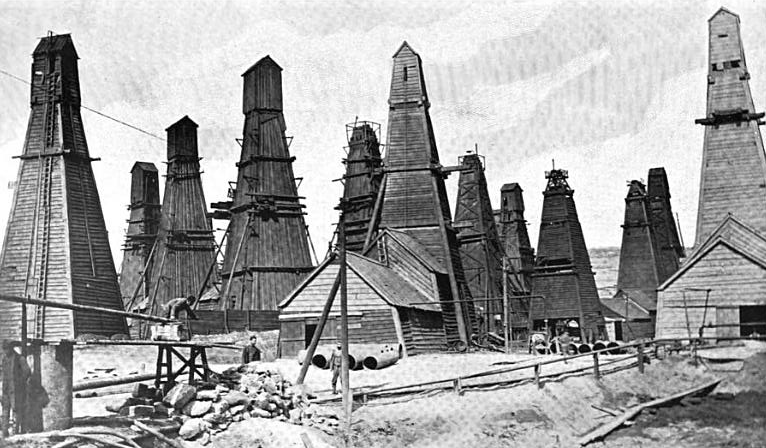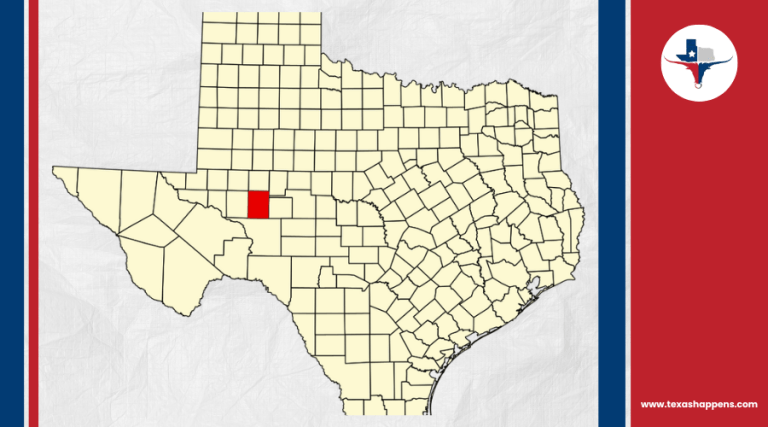In Best, Texas, you’ll find a tale of boom and bust marked by its once-thriving oil industry. Founded in 1924, it rapidly grew to 3,500 people, driven by the Santa Rita oil revelation. This lively town wasn’t just about oil; it earned a dark reputation for lawlessness, attracting both fortune seekers and notorious criminals.
Origin and Founding
In July 1924, Best, Texas, sprang to life as a switch for the Orient Railroad, right on the heels of the Santa Rita Number One oil finding in 1923. This small but ambitious town was named after Tom Best, an English stockholder with interests in the budding oil industry.
You can imagine the buzz and excitement that surrounded the town’s founding, as it was a clear illustration of the rapid development typical of the oil-rich Permian Basin. Best’s town history is deeply rooted in these early ventures, marking a significant chapter in the region’s expansion and reflecting the broader trends of economic development in Texas during the oil boom.
The founding importance of Best can’t be understated. It was strategically positioned as a railroad switch, which was vital for transporting oil and other goods. This location choice wasn’t accidental; it reflected the optimism and forward-thinking that characterized the period. At its peak in 1925, Best boasted a population of around 3,500, a demonstration of the allure of prosperity tied to the oil boom. Best quickly became a thriving hub, embodying the spirit of rapid industrial growth.
Oil Boom Era

Often remembered for its rapid rise and likewise swift decline, Best, Texas, epitomized the volatile nature of the oil boom phase. In 1924, following the crucial oil revelation at Santa Rita Number One, Best transformed into a lively hub almost overnight.
The town quickly became an essential supply center for the burgeoning oil industry, contributing to the economic impact of the oil boom in the region. People flocked to Best, chasing fortunes and opportunities presented by this new period. By 1925, the population soared to about 3,500 as workers and businesses poured in, enthusiastic to capitalize on the oil boom.
The economic impact of this revelation was profound, driving substantial growth and prosperity in Best. However, this prosperity came with a caveat. The town’s economy was heavily dependent on oil production, leaving it exposed to the unpredictable swings of the oil market. The population dwindled dramatically, dropping to under 300 by 1945, and continued to decline in the following years.
Infamous Reputation
Situated amidst the rugged Texas landscape, Best became notorious for its wild and lawless days during the oil boom, earning the dubious distinction of being “the town with the Best name and the worst reputation.” Crime ran rampant as the town attracted a variety of unsavory characters drawn by the promise of quick wealth and unchecked freedoms. This criminal culture thrived in an environment where law enforcement was sparse and often overwhelmed. The lack of a strong police presence meant that crimes like murders and brawls went largely unchecked, contributing to the town’s infamous reputation.
Former Reagan County Clerk H.L. Puckett aptly described Best as a haven for undesirable characters, underscoring the community’s struggle with rampant criminal activity. These conditions made Best a magnet for those seeking a place where the usual rules didn’t apply.
Stories of Best’s notorious past were even immortalized in Clyde Ragsdale’s novel “The Big Fist,” which captured the essence of the town’s tumultuous and violent history. The murder of Deputy Sheriff George Hayes at the Santa Rita Hotel exemplified the town’s lawlessness, further solidifying Best’s standing as a symbol of an untamed Texas frontier.
View this post on Instagram
Violent Incidents
Best, Texas didn’t just earn its reputation through whispers and rumors; the town’s violent incidents were very real and frequent. In 1926, a dance at the Santa Rita Hotel turned deadly when Deputy Sheriff George Hayes was shot by W.L. Coates after being ejected for misconduct. This wasn’t an isolated event; Coates also shot local operator Alta Beam before taking his own life days later. Such incidents highlighted the rampant lawlessness plaguing the town.
You’d find that the struggles of law enforcement in Best were profound. With a limited presence, maintaining order was a constant battle. The town attracted not only honest workers but also those engaged in criminal activities. Best’s chaotic environment made it a haven for undesirable characters, as former Reagan County Clerk H.L. Puckett noted, further solidifying its notorious reputation.
The frequency of violent outbreaks created a sense of perpetual danger. Those tasked with upholding the law found themselves overwhelmed, unable to curb the escalating crime rates. As a result, Best became synonymous with chaos and violence, a stark reminder of the challenges faced by authorities trying to manage such a tumultuous place.
Population Decline
The story of Best, Texas, is marked by a dramatic population decline that reflects the town’s economic fortunes. Once a thriving oil town with a population peak of about 3,500 residents in 1925, Best experienced a sharp decline as the oil boom faded. By 1945, only about 300 residents remained, directly tied to the town’s economic downturn. This drastic demographic shift highlights how fragile such towns can be when they rely heavily on a single industry.
As you trace Best’s history, you’ll notice the continued population drop. By 1983, only two families and a service station-post office were left, painting a picture of a nearly deserted town. The 1990 census recorded just 25 residents, underscoring the community’s struggle to withstand these changes.
Wrapping Up
From a thriving community of thousands, fueled by the promise of wealth, to a nearly deserted ghost town with only a few resilient souls left, Best is a reminder of just how unpredictable those early oil towns could be.
For a while, Best was more than just a spot on the map; it was a symbol of opportunity, excitement, and, admittedly, a bit of danger. But, like many boomtowns, it was built on the shifting sands of an oil economy, and when that foundation gave way, so did much of the town’s livelihood. Today, what’s left of Best stands as a testament to a bygone era—when fortune, fame, and sometimes trouble waited around every corner.


